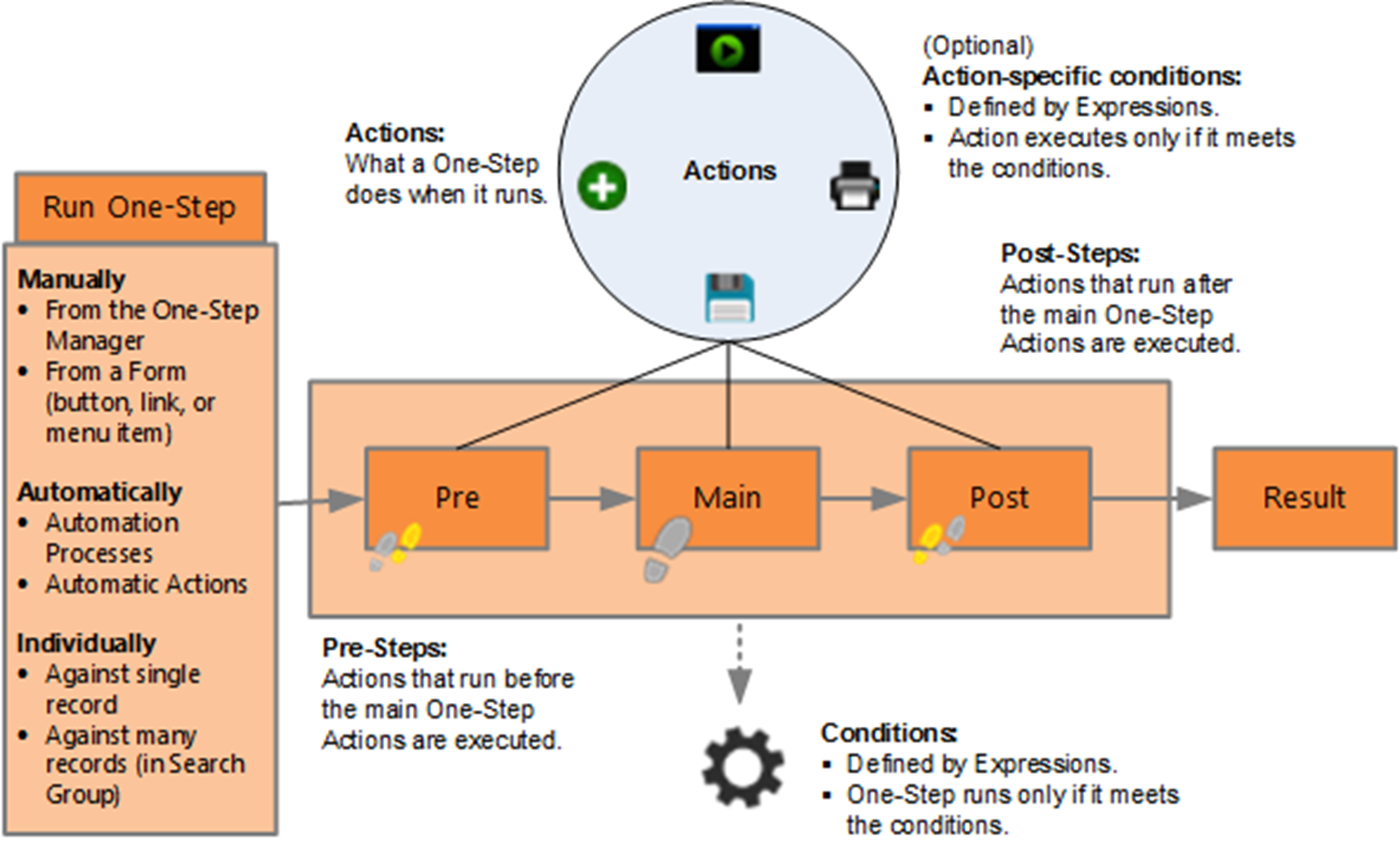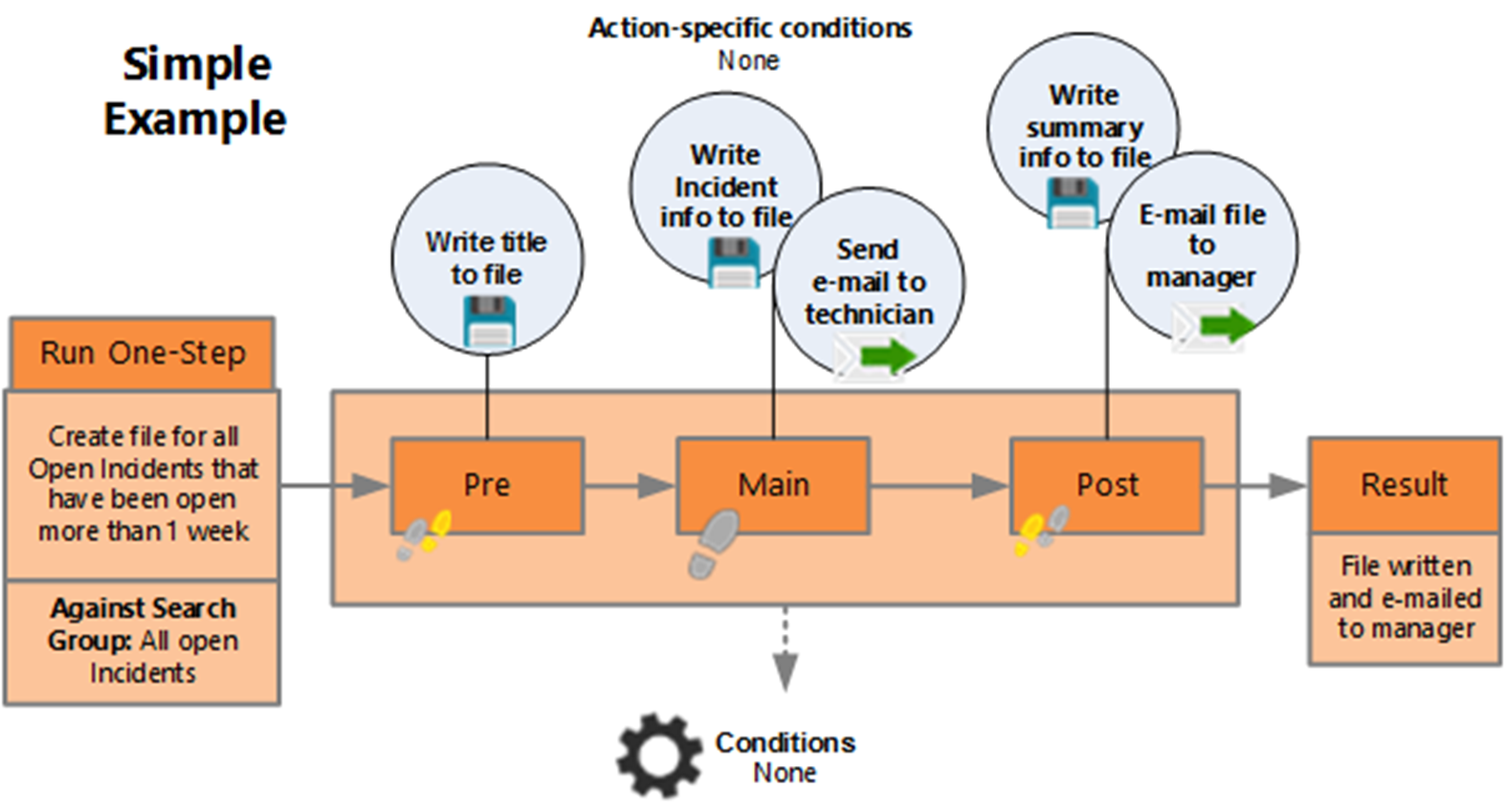About One-Step Actions
A One-Step™ Action is made up of a series of Actions and can be simple (a few Actions) or complex (multiple Actions that run under conditional circumstances). Use One-Step Actions to automate common or repetitive tasks.

For example, you can use One-Step Actions to:
- Create a file for all Incidents that have been open for more than a
week, and then e-mail it to the manager (simple
example with no conditions).

- Create a Change Request from an Incident, and then notify the change
owner via e-mail (complex example with multiple
Actions and conditions).

- Run One-Step Actions from the One-Step Action Manager or from a variety of places within CSM, including:
- CSM Desktop Client toolbars (either User or Global/Role).
- CSM Desktop Client Task Pane (either User or Global/Role).
- Business Object records (as record-specific One-Step Actions on the toolbar, menu bar, context menu, Task Pane, a button, or a link). One-Step Actions can also be Automatic Actions that are executed when a Business Object is saved.
- Browser Client (from the menu bar; as buttons, links, and Widgets on Dashboards; as buttons and links on Business Object records, or as record-specific Actions in a context menu).
- Customer Portal (from a menu bar, Dashboard Widget, or HTML page).
- Dashboards (by clicking Widgets).
- Automation Processes (One-Step Actions that run automatically based on specified rules).
- Cherwell Outlook Add-In (record-specific One-Step Actions that run from Microsoft Outlook®).
- E-mail and Event Monitor (One-Step Actions for processing monitored e-mails).
- Approvals (One-Step Actions that run when an Approval is approved, denied, or expired).
- Scheduled Items (One-Step Actions that run on a scheduled basis).
CSM provides several OOTB One-Step Actions in the CSM Desktop Client and Browser Client (on panes, menu bars, and toolbars, as well as in Business Objects (to help you work with records) and OOTB Automation Processes). Use these One-Step Actions as-is, edit them, or create your own using the One-Step Editor. You can also add One-Step Actions (along with many other types of Actions) to various CSM areas.